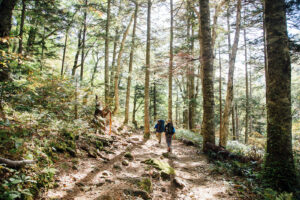A SUSTAINABLE LIFESTYLE
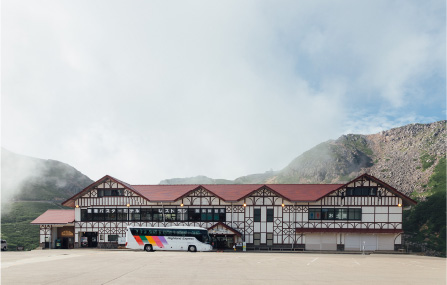
Private vehicles are banned from certain sections of the park, and should be parked at one of the designated lots. The journey around the park can be completed by bus or taxi. Chubusangaku is the first national park in Japan to implement this measure, which is designed to protect the natural environment and reduce congestion on the narrow mountain roads.
Read more about Kamikochi and Mount Norikura to learn about how to get there and when the best time to go is.
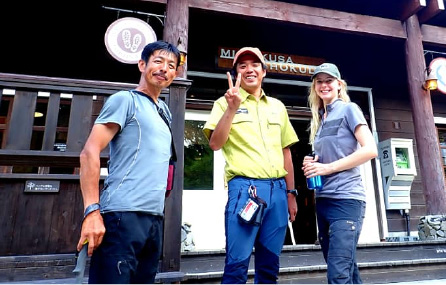
The history of Park Rangers began when twelve individuals, following the system of American National Parks, were assigned to various National Parks in 1953 as "locally stationed managers." Park rangers have a wide range of duties.
To prevent environmental damage caused by development and other activities in the National Parks and to protect wild animals and plants, various activities are subject to regulations. Reviews required for granting permission and authorization for such activities are conducted by park rangers.
Park planning is an important part of protecting the environment and requires planning and zoning for protecting the environment and construction of visitor facilities. Park Plans are reviewed periodically in accordance with the changing natural environment and based on other relevant factors.
Visitor centers, nature trails, restrooms, observatories, and other facilities are developed, upgraded, and managed and operated to help visitors to the National Park gain a better understanding of the natural environment and safely enjoy time in nature.
Taking advantage of national parks' natural environment, rangers use visitor centers, as a base to organize nature observation groups, craft workshops, and other activities, thus promoting environmental education.
With the cooperation of NPOs and local residents, they also engage in nature protection activities outside of national park grounds, including the protection of wildlife and preservation of forests, rivers, and Satoyama (community-based forest area).
- Management of Protection in Nature Conservation Areas
- Protection of Endangered Species and Regulation of Alien Species
- Conservation and Restoration of Satochi (rural landscape) and Satoyama (community-based woods)
- Promotion of environmental education
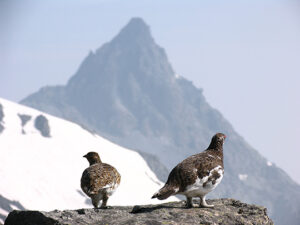
Without biodiversity, humanity has no future. The planet’s magnificent diversity of living organisms is essential for maintaining the balanced, productive, and resilient natural environments humans rely on to survive and prosper. Healthy ecosystems need multiple species that fulfill similar ecological roles in order to adapt to sudden crises and ongoing change. The fewer species there are, the greater the danger an entire ecological structure will topple if just one piece is removed. The rich variety of species and ecosystems found in Kamikochi is astounding for such a heavily trafficked resort area, and preserving this biodiversity is of paramount importance.
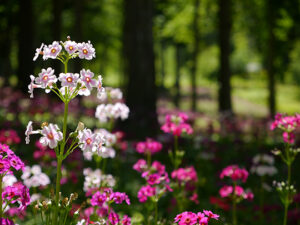
Even the casual visitor to Kamikochi cannot help but notice the number of plants, fungi, mammals, birds, fish, and insects on display. Along the riverside walkways grow zenteika daylilies, forget-me-nots, and soft windflowers, as well as the unusual keshōyanagi (“makeup willow”), a wind-pollinated tree normally found only in Hokkaido. Narcissus flycatchers swoop through the air and bush warblers and Japanese robins call from the branches of the larch trees. Mourning cloak and high brown fritillary butterflies flit among the summer blossoms.
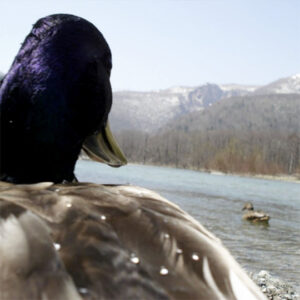
Kamikochi’s flora and fauna have evolved to survive the harshest of mountain winters, yet today some are under threat of extinction. Invasive species, global warming, and—unless care is taken—human incursion threaten their environment. The park rules may seem strict, but please remember that they are in place for good reason. Help to protect and preserve these special gifts of nature for future generations. The loss of even one flower, one insect, or one bird species is significant. When they vanish, they are gone forever.
There are a set of common-sense rules that should be followed when you enter a National Park and we invite you to review them and to make a promise to abide by them when you visit. This will help us and future generations to be able to enjoy this beautiful place.
We are sure you will love all there is to discover and experience here and we are sure your friends and family back home would love to see it too. So please take lots of photos and be sure to share them online - #JapaneseAlps.
ARTICLES ON SUSTAINABILITY
- Mar 18, 2022
- Mar 10, 2022
- Mar 1, 2022






